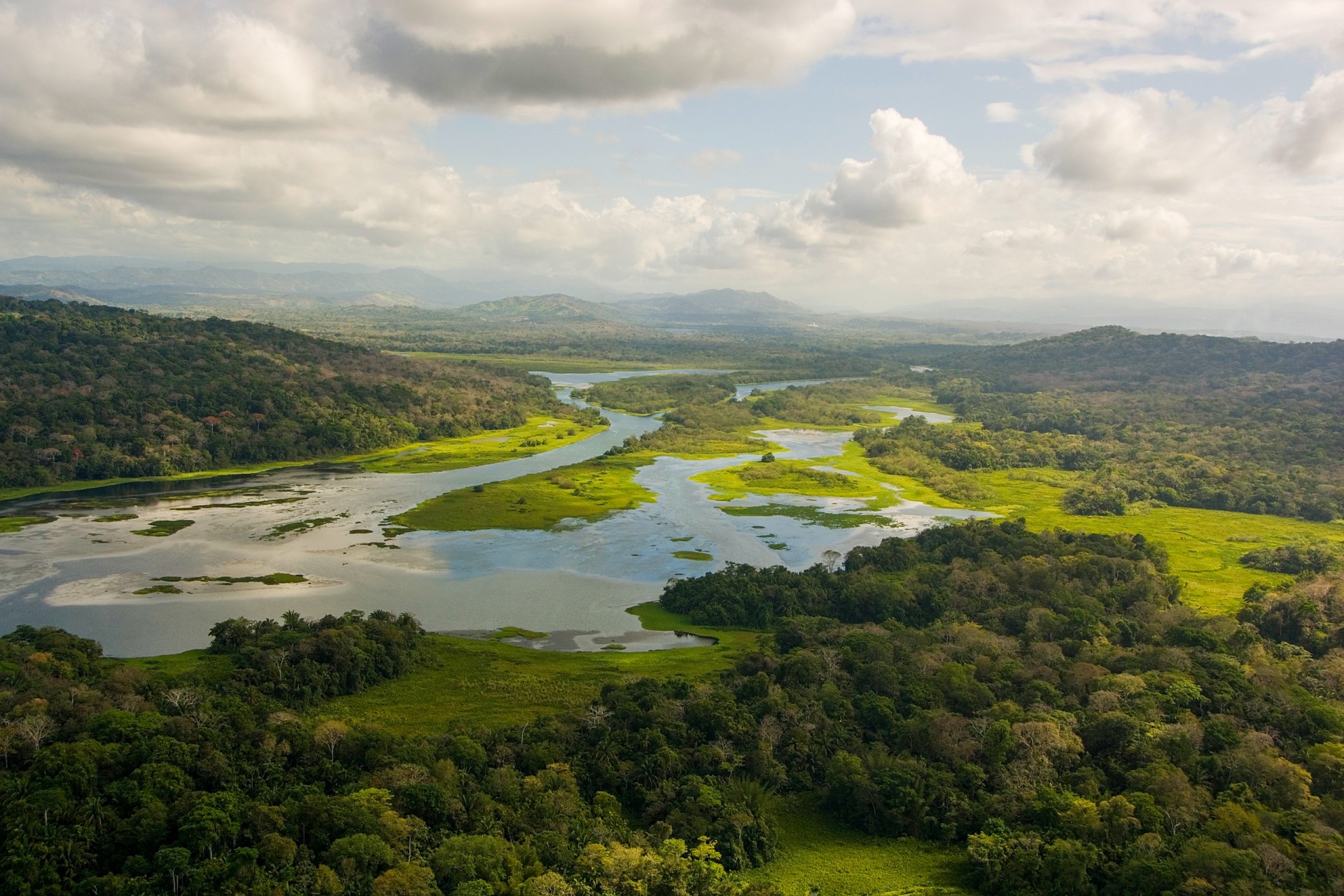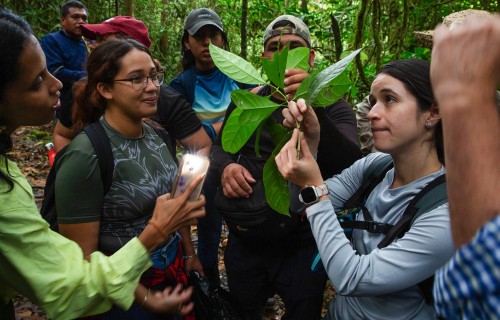Leafcutter ants have blind
spots, just like truck drivers
Generous
nature
Weighing costs and benefits of motivating landowners to reforest the Panama Canal Watershed
Colón
How far should we go when paying for natural services? Economic sciences can help us calculate the exact amount
Nature is the main provider of resources to society. Without it we would not be able to cover our basic needs, such as clean water, food or medicine. But its ability to provide these ‘ecosystem services’ is often compromised by the presence of human beings and their land management decisions.
Seeking to improve the environmental health of natural ecosystems, Payments for Ecosystem Services (PES) programs were devised, which offer economic incentives to those who manage their lands in ways favorable to the environment. Scientists from the Smithsonian Tropical Research Institute (STRI) and collaborators studied the viability of selected water related PES programs in the Panama Canal Watershed, from an economic point of view.
Their research focused on the costs and benefits of the Panama Canal Authority (ACP) offering contracts to landowners to reforest their lands through sustainable agriculture methods. Scientists evaluated the potential impact of this effort on increasing water flow and reducing sedimentation in Lake Gatun, the main lake feeding the Canal, during the summer months, a time when both conditions are critical for vessel transit.
Through surveys to more than 700 landowners across the Panama Canal Basin, they also managed to establish the “market equilibrium” for this type of program. That is, the point of perfect balance between the supply and demand of ecosystem services.
“Our research shows that there are market equilibria or limits to these programs, and that reforestation to increase dry-season water flow and reduce sedimentation only makes sense in certain areas. According to our analysis, the Panama Canal Authority is applying PES in exactly the right areas,” said Jefferson Hall, forest ecologist at STRI.
In the end, this research strengthens the economic sciences linked to PES programs, since it provides mechanisms to analyze its scale and compare its costs and benefits, based on real data, something that most previous assessments have set aside.
The scientific team also reflected on the importance of national parks, such as the Chagres National Park, in the upper areas of the Basin. They suggested that reforesting 10 thousand hectares within the Park would have a greater impact on ecosystem services than reforesting all private lands eligible for a PES program.
The Chagres River is the major tributary to the Panama Canal. Landowners in the watershed may make more environmentally friendly land use decisions when Payment for Ecosystem Services programs are in place.
“There are a variety of reasons agroforestry could be important in this watershed, such as enhanced livelihoods, biodiversity, carbon sequestration or flood mitigation. This manuscript only looked at two of these,” concluded Hall.
Members of the research team are affiliated with STRI, the Department of Resource Economics and Environmental Sociology at the University of Alberta, the School of Forestry and Environmental Studies at Yale University, the Department of Agricultural and Resource Economics and Global Institute for Water Security at the University of Saskatchewan, the Department of Civil and Architectural Engineering and the Haub School of Environment and Natural Resources at the University of Wyoming and the Water Mission Area of the U.S. Geological Survey. Research was funded by grants from the U.S. National Science Foundation's Water, Sustainability and Climate Program, the Smithsonian Tropical Research Institute, the Weyerhaeuser Memorial Fund, the Silicon Valley Foundation, Stanley Motta and the Hoch Family.
Reference: Adamowicz, W., Calderon-Etter, L., Entem, A., Fenichel, E.P., Hall, J.S., Lloyd-Smith, P., Ogden, F.L., Regina, J.A., Rouhi Rad, M., Stallard, R.F. 2018. Assessing Ecological Infrastructure Investments. Proceedings of the National Academy of Sciences. https://doi.org/10.1073/pnas.1802883116













